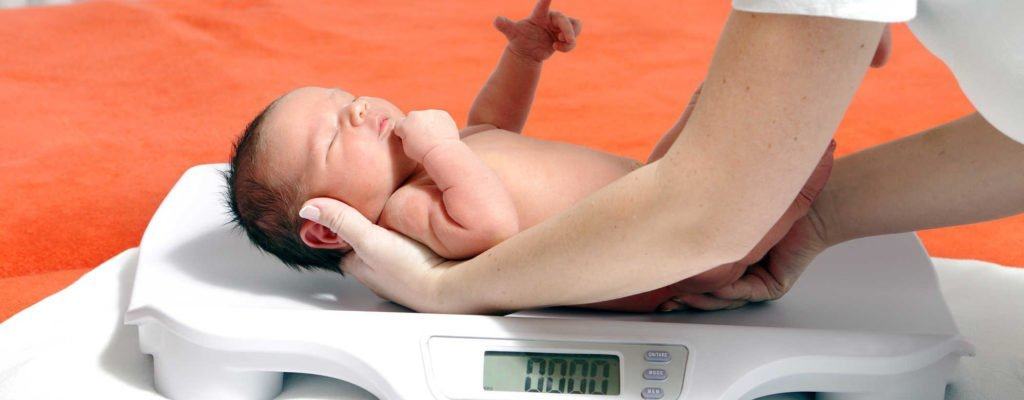Ways to determine an infants caloric needs

Learn how to determine your baby’s caloric needs, including the calories in breast milk and formula, to ensure your infant gets the right nutrition for healthy growth.
Many people often think that air pollution occurs only in the streets or industrial zones without knowing that the space in their own house can be seriously polluted. Indoor air pollution causes many dangerous health problems.
Imagine coming home from your whole family after a busy day, with everyone breathing out of breath from pollution and noise on the road. This makes you feel very refreshed after a long day. However, what do you think when we say that the environment inside your home may also be in an alarming state of pollution?
Do you object to this or are you a little skeptical? Let's follow the sharing in the following article of aFamilyToday Health, we will provide you with useful information.
In fact, the indoor air you breathe is a dangerous mixture of gases that include irritants, carcinogens, harmful chemicals, neurotoxins, house dust mites, allergens. and germs… They come from the daily activities of your home. Indoor air pollution can affect people of all ages. In some cases, this condition can cause serious health problems and developmental disorders, especially in infants.
Health experts have identified 11 of the most common sources of indoor air pollution present in most households:
Mold spores, especially in humid weather, are an important contributor to indoor air pollution. Mold can form on walls, kitchen shelves, carpets, and clothing for a long time ... Inhaling spores with mold can trigger coughing attacks, causing allergies in children and even people. big.
Many families have a habit of using charcoal, coal ... for cooking and heating. This is the cause of the formation of carbon monoxide, a gas toxic to human health.
In addition, the use of stoves for cooking or heating or burning incense too much and often… makes smoke accumulate in the space of the house. This inadvertently causes particles of matter to enter the lungs, causing serious health problems for family members.
Carpets are a popular household item, home to many microorganisms such as ticks and house dust mites - factors that have been shown to cause asthma.
In addition, carpets made of artificial materials may also contain volatile organic compounds (VOCs) including toluene, formaldehyde, and benzene. These are carcinogens that have been confirmed by scientists.
Most common wall paints today contain lead. Long-term exposure to lead is badly affected and difficult to repair. Furthermore, many paints may contain volatile compounds that have adverse health effects.
Smoking in the family is also a cause of serious air pollution in the home. Tobacco smoke can also cling to the clothes of smokers or people who are regularly in contact with smokers and mix with indoor air, "haunt" the carpets, sofas, curtains ... affecting air quality. . The nicotine in cigarette smoke is a well-known carcinogen.
Most cleaners contain volatile compounds (VOCs) such as aerosols, which cause many breathing problems. In the composition of many bleaching solutions that contain chlorine, the substance is at risk of creating chlorine gas. Chlorine is an extremely harmful gas that can even be fatal if inhaled.
Many furniture and furniture made of wood, rattan, bamboo, sedge… are often covered with paint and varnish. Many studies show that people who inhale paint and varnish have a risk of asthma, physiological disorders, even cancer. The reason is that the composition of the varnish usually contains industrial iron powder, mercury, lead ... which are hazardous to health. Children exposed to these substances increase the risk of asthma.
Most products such as aromatherapy, room sprays ... commercially available air fresheners contain ethylene based glycol ether. These ingredients cause nerve problems as well as blood related problems. They also contain phthalates, which are an endocrine disruptor in babies, that interfere with hormone secretion in the body and affect development.
In addition, many people have a habit of leaving camphor (moth balls) in the closet, bathroom to keep cockroaches and deodorize. The mothballs contain naphthalene, a volatile chemical that produces pollutants that exist in the form of gases.
Candles are mainly produced from paraffin wax, a petroleum by-product and treated with bleach to whiten. When burned, candles release benzene and toluene… which are dangerous carcinogens.
Meanwhile, candle manufacturers often add artificial dyes, synthetic flavors to color and fragrance this item. In those ingredients often contains acrolein, a substance that causes lung cancer. Thus, it can be seen that the use of candles indoors is no different from activating the time bomb causing destruction of the respiratory tract.
The use of hairspray, nail polish ... can cause volatile organic compounds to be released into the indoor air and pollute.
Dogs, birds, cats, reptiles ... are also a source of indoor air pollution that few people think about. Fur, chalk, parasitic animals ... on the pet's body are also a source of allergies for many people. Therefore, if your family has pets, you should limit them from playing in the living room, kitchen, especially the bedroom to ensure health. In addition, you need to be vaccinated and vaccinated against helminths and wash them periodically.
Indoor air pollution has a serious impact on human health. Here are some of the effects of indoor air pollution on human health:
Exposure to many substances such as benzene, toluene, formaldehyde, acrolein, nicotine, asbestos ... increases the risk of developing cancer.
Indoor air pollution exposes you to frequent exposure to allergens, pollutants that block breathing, increasing your risk of many respiratory diseases, most commonly asthma. bronchitis and sinusitis.
Regular contact with house dust mites, mold and bacteria, insects ... causes this situation. Foreign allergic alveolar disease causes acute dyspnea with flu-like symptoms.
Phthalates, asbestos, nicotine, etc. can cause problems with reproductive health including poor sperm quality, decreased testosterone levels, and abnormal growth of the genitals.
Formaldehyde, a major indoor air pollutant, is responsible for a wide range of skin irritation, including allergies and inflammation.
Exposure to pollutants such as lead and formaldehyde can cause many neurological problems, including dementia and Alzheimer's disease in the long term.
Carbon monoxide, a serious indoor air pollutant, is one of the main causes of cardiovascular disease (CVD), which is potentially fatal.
In addition, the health of the digestive tract and kidneys is also affected by inhalation of contaminated indoor air.
Do the following to make sure that indoor air pollution is under control:
Do not allow anyone to smoke or use anything that contains nicotine in your home.
The use of charcoal, coal for cooking or heating produces smoke and soot that leads to serious indoor air pollution. Instead, you can use electric cooking appliances to reduce air pollution in your home.
If your home's ventilation system is too old, renovate it and install larger windows if possible. Regularly open large doors and windows to allow air to circulate. This can allow indoor pollutants to escape and the living space to be more sunlight.
Also, you should use kitchen hood to remove indoor pollutants. In addition, if possible, you should equip an air purification plant . This device removes contaminants from indoor air and provides you with clean air.
If you use a humidifier, set the humidity level in your home to between 40 and 50% to control mold and mold growth.
In addition, if possible, you should choose to use air conditioners that release hydrogen ions and active oxygen, as well as filter dust and dust mites, bacteria and allergens. in the air at high level. When combined with harmful substances with OH origin, mold, bacteria ... hydrogen i-on and active oxygen will convert them into harmless water.
Avoid using products with ingredients that are synthetic fragrances such as detergents, incense, deodorants, insecticides, synthetic essential oils ... that can create volatile compounds causing pollution. heavy for indoor atmosphere.
Many people have a habit of leaving mothballs in wardrobes and bathrooms to keep cockroaches away and deodorize. But mothballs contain naphthalene, a volatile chemical that causes pollutants to exist as gases.
The vacuum cleaner is one of the most effective sanitary devices that helps to control indoor air pollution. They help remove surface dust particles, house dust mites and many other pollutants.
If you don't have a vacuum cleaner, you need to wipe it off regularly to ensure a clean living space. While cleaning dust, you should wear a mask that can filter out fine dust to avoid breathing in pollutants.
New fabrics are chemically treated, so wash well before using to avoid any risk of irritation.
In the upcoming home painting, you should choose to buy lead-free paint for the wall to protect the health of the whole family.
The footwear you wear can be a source of serious pollutants from the outside environment into your home. Therefore, make sure to clean your shoes thoroughly before bringing them indoors or leaving them outside of the living space. Ideally, you should put the shoe cupboard in the yard instead of in the living room or bedroom. After being outside, you should wash your hands and feet to ensure hygiene.
When choosing to buy carpets, make sure that the rugs you choose are naturally dyed for safety, and avoid choosing a carpet with a color that is too dark because they are often dyed too much. This helps family members reduce the risk of exposure to harmful chemicals.
Installing smoke alarms and carbon monoxide detectors can be investments that you should consider making to control and prevent indoor air pollution.
If possible, you should switch to organic cleaners to reduce pollution and stay healthy.
Nothing can stop indoor or outdoor pollution as effectively as green plants. Trees are the best natural air purifiers. Add trees to the living space for a better atmosphere.
Bathrooms and kitchens are places with high humidity, which create favorable conditions for microorganisms and mold to grow. Therefore, keep these areas dry at all times. If your tap water leaks, repair or replace it immediately, to avoid mold growth.
The use of hairspray, perfume, nail polish remover ... should be done in a well-ventilated room or near a window. When using beauty products, you should use them sparingly and avoid wastage.
Here are answers to some frequently asked questions regarding indoor air pollution
The following types of air purifiers are currently on the market, each of which is effective in its own right.
The air purifier works on a mechanical filter model to clean the air.
Electrostatic air purifiers can help remove charged pollutants and collect them to disk.
UVGI or UVGI air cleaners remove mold, dust mites and other biological contaminants with UV rays.
Gas-phase carbon activated filter is extremely useful in removing smoke and particulate matter.
The answer is no. The air conditioner will not help reduce indoor air pollution. You must use an air purifier to filter the air in the living space.
Hopefully with the information shared above, you have envisioned that what we do or what we use can contribute to indoor air pollution, causing many health problems. Try applying the air pollution control measures outlined above to make your living space cleaner.
Learn how to determine your baby’s caloric needs, including the calories in breast milk and formula, to ensure your infant gets the right nutrition for healthy growth.
Discover the top 5 smartest dog breeds in the world, including Border Collie, Poodle, German Shepherd, Golden Retriever, and Doberman Pinscher. Learn about their unique traits and why they are considered the most intelligent dogs.
Discover 7 nutritious and delicious ways to cook egg porridge for babies, including recipes with cheese, pumpkin, tomato, and more. Learn how to prepare baby-friendly egg porridge with our expert tips.
After a series of medical measures they obtained a complete human vascular system profile.
Watermelon is one of the fruits that many people love, not only cheap but also delicious, nutritious and refreshing in the summer. To get delicious watermelon pieces, show off your housewives, your artistic talents to cut beautiful pieces of watermelon.
aFamilyToday Health - The digestive system and body in each baby is different. Parents need to recognize notes to deal with when babies have a food allergy!
Babies need many factors for perfect development. aFamilyToday Health shares with parents things to keep in mind when babies are 8 weeks old so that parents can take care of their babies the best!
Babies need many factors for perfect development. aFamilyToday Health shares with parents things to keep in mind when babies are 18 weeks so that parents can take care of their babies the best!
Babies need many factors for perfect development. aFamilyToday Health shares with parents things to keep in mind when babies are 28 weeks old so that parents can take care of their babies the best!
Babies need many factors for perfect development. aFamilyToday Health shares with parents things to keep in mind when babies are 32 weeks old so that parents can take care of their babies the best!








